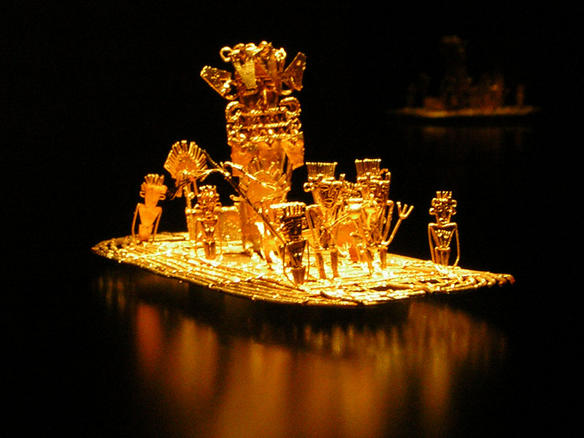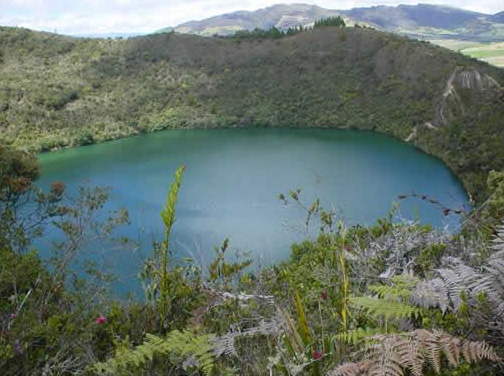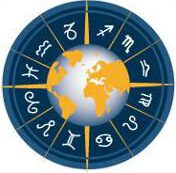Lake Guatavita the site of El Dorado in astrogeography – Aquarius plus Gemini as the “hype constellation” and 15° Leo as the heart of gold
Related articles: The Origin of the Inca Gold – the Pyramid City of Túcume, Scorpio as the Resonator of Sharks at the Golden Nugget in Las Vegas, The Top 20 Gold Mines worldwide,
Lake Guatavita is a 330 m diameter lake at 3000 m altitude in the Colombian Andes in the municipality of Sesquilé. According to the wiki article: “Lake Guatavita was reputedly one of the sacred lakes of the Muisca, and a ritual conducted there is widely thought to be the basis for the legend of El Dorado, “the golden one”. The legend says the lake is where the Muisca celebrated a ritual in which the zipa (named “El Dorado” by the conquistadors) was covered in gold dust, then venturing out into the water on a ceremonial raft made of rushes, he dived into the waters, washing off the gold. Afterward, trinkets, jewelry, and other precious offerings were thrown into the waters by worshipers. A few artifacts of gold and silver found at bottom hold proof to this claim; however, to date, attempts to drain the lake or salvage the gold (see the wiki article on: Lake Guatavita gold).”

The gold hype among the European invaders wasn`t of course directly related to Lake Guatavita nor was it caused by the energetical attraction of the lake in any way. The site`s relation to the gold rush is hypothetical as even the authenticity of the “El Dorado” legend is uncertain not to speak about the authenticity of the Lake Guatavita as the heart of South America`s gold treasures. That is to say that the El Dorado gold rush was projected onto the place. To some extent this is also emphasized by the position of the lake in the 2 air signs Gemini and Aquarius. But still a resonance between a legend and the site onto which it is projected has to be assumed according to the astrological law of resonance.
The astrogeographical factor that explains this resonance is the supra-regional position (fl1) of Lake Guatavita at 15° Leo the very heart and center of the sign of gold and through its direct resonance with the Sun also the sign of magnetism and attraction combined with the position on 0°Sagittarius the sign of expansion, the search for fast and easy profits and the ideal of travelling.

Astrogeographic position for morphogenetic field level 3 which describes the atmosphere and energetical topics of the lake itself: the lake is located in the combination of the two air sign Aquarius and Gemini. Due to their role as air signs (unstable situation) the resonance of Gemini and Aquarius supports the theory that the lake is a kind of of sinkhole.
In regard to the legend of the “gold-dusted man” Aquarius as the opposite sign of Leo the sign of gold stands for the part of the legend in which the gold dust is washed of away and dissolved in the water.
Astrogeographic position for morphogenetic field level 1 which describes the resonance of the place as the “embodiment” of the global gold rush related to El Dorado: one coordinate lies at 15° – which means in the very heart and center of highly magnetic, royal fire sign Leo the sign of the sun and light and the most important astrological resonator for gold or even the sign of gold itself. The second coordinate lies on the first degree in dynamic fire sign Sagittarius the sign of expansion, luxury, success, searching, finding and the hype for occasions, gains and the topic of seeking the fastest profits to be achieved with the least effort.
The combination of the center of magnetic attraction and gravitation (15°Leo) with the sign of the hunt for success, discovery, adventure and fast profits delivers a stunning explanation for the resonance of this supposed site of the El Dorado mystery.
This astrogeographic position has also a direct resonance through exact opposition with the astrogeographical position of the pyramid city of Túcume in Peru. Túcume repesent the actual origin of the Inca gold and the site of the by far largest gold findings and thus the hidden center that the gold rush had been aimed at without ever making it there. Compare my article on the site of the Lambayeque culture. The direct opposition between the site of the production of the Inca Gold and the symbolic site of the Gold Rush throws a fascinating light on the astrological interpretation of these two zodiac signs: while the advanced technology for processing gold was learned in Gemini – Sagittarius its opposition stands for the hunt for success, wealth and glory and the chasing of opportunities.
